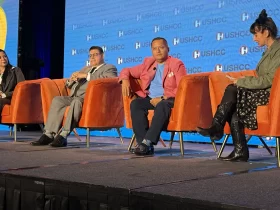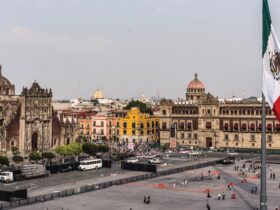In recent weeks, the United States has been the scene of one of the largest immigration raids in its recent history. Nearly 500 workers—many of them of South Korean origin—were detained at a Hyundai battery plant in Georgia. The news not only shook the industrial sector, but also caused diplomatic concern in South Korea, one of the country’s main trading partners.
At first glance, these operations appear to be an act of “law enforcement.” However, a closer look reveals something disturbing: the human, economic, and diplomatic cost of this heavy-handed policy. This is not the first time this has happened. Similar raids have marked different administrations, and although they are justified by the idea of protecting the local labor market, the effects seem to contradict that argument.
On the one hand, the economic impact is immediate. The plant in Georgia—a project worth more than $4 billion—came to a screeching halt, delaying the production of batteries for electric vehicles. In a context where the United States is fiercely competing to lead the transition to clean energy, these disruptions are more than a setback: they are an obstacle to the country’s competitiveness. Foreign companies, which have invested billions in U.S. soil, are beginning to wonder whether it is really safe to bet on a territory where regulatory uncertainty can derail entire projects.
On the other hand, there is the social dimension. By focusing on punishing workers—many of whom arrived on legal visas but in different categories—the message is sent that those who do not fit a strict definition of “labor legality” are expendable. This simplistic view ignores the fact that much of the infrastructure and the most ambitious industrial projects depend on foreign workers who are skilled and willing to fill positions that the local workforce cannot always fill.

The most worrying thing is that these measures are presented under a veneer of neutrality, as if they were simple administrative actions. But one need only look at who is disproportionately affected to understand that the discourse of “equal conditions” is, in reality, a way of disguising something much deeper: a rejection of those who are perceived as “others,” even though those same “others” are building the country’s technological and economic future.
The contradiction is obvious. The United States asks its allies for millions in investments, celebrates the arrival of new plants and industrial projects, and at the same time hinders their operation by not offering a flexible and realistic immigration system. The result is a vicious circle: foreign capital is attracted, but the workers who make that development possible are persecuted.
In the end, the question is not only what message is being sent to migrants, but what message is being sent to the world. Can a country aspire to be a global leader in innovation while closing itself off to the diversity and international talent that innovation requires? Each raid responds with facts to what political rhetoric tries to gloss over.
The United States has an opportunity before it: to review its immigration policy with a view to the future. Because as long as it continues to see foreign labor as a problem rather than a resource, it runs the risk of undermining not only its international alliances, but also its own economic growth. And in that game, the real cost is paid not only by those detained, but by the entire nation.






































Leave a Reply